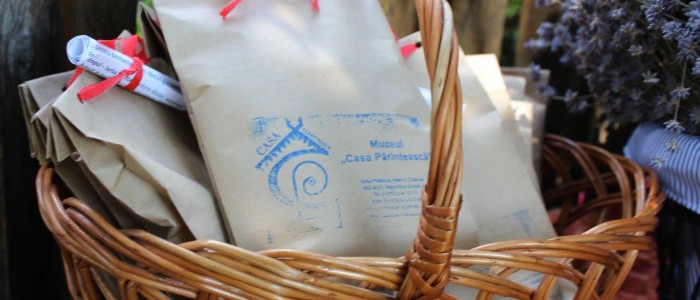„Casa Părinteasca” teas
The history of the „Casa Parinteasca” Museum, the landmark of the culinary route from Palanca, started in 2000 when Tatiana Popa, the Director of the Museum, managed to recover the family home estate that belonged to her parents and grand parents – deported by the Soviet authorities in 1945. In memory of her parents, grandparents and of the entire Popa-Biciusca blood, Tatiana Popa committed her self to set up a museum, for the revival and perpetuation of traditions and crafts. A museum that became, in time, an important tourist attraction from the area.
From the entrance you can notice the flowers collection in the garden – “peasant ” flowers, reminiscent of the grandparents garden. Cold ment, spearmint, crocus, geraniums and other flowers, all full of flavors and beautiful. The flower garden has a beneficent and curative action on visitors, says Tatiana Popa. From here, plants are collected and teas are served to guests who are visiting the “Casa Parinteasca”. Hyssop (Hyssopus) a plant that is mentioned multiple times in the Bible, even in the Old Testament, is the main ingredient in aromatic teas of Mrs Tatiana Popa. Tea also contains rosemary (Rozmarinus officinalis) with balm (Melissa officinalis), being highly appreciated by all guests.
Here visitors are greeted with strawberry jam, quince marmalade, black currant jelly, sweet cherry jam and many other products, which combine perfectly with the tea flavor. A special delight is the dandelion syrup, prepared in the spring time after an old, traditional recipe.
Ever present are the traditional buns – cakes with poppy „Scutecele Domnului” baked in the stove and sprinkled with poppy as well as the homemade pretzels.
At the ”Casa parinteasca”, visitors are initiated into art and crafts, including ancient – making carpet type “in bumbi” – a combination of convex rosettes forming a carpet decor relief. After a long time and efforts that Tatiana Popa made to revive this technique of carpets waving, famous once – in the interbelic period, elements of the carpets texture were included in the collection of the german designer Isabell de Hillerin, in 2012. Thus, the carpet „in bumbi” from Palanca, Calarasi, appeared in the Vogue fashion magazine, and not only.
Visiting the Museum, with the four rooms furnished in the style of traditional houses of Bessarabia at the end of the 19th century, participating in creative workshops, hearing folk songs sung by children from Palanca, tasting traditional products – all create an unforgettable atmosphere at the “Casa Parinteasca”.
Text in Romanian language: Lilia Curchi
Translation and adjustment: Silvia Ursul and Elena Scobioala


